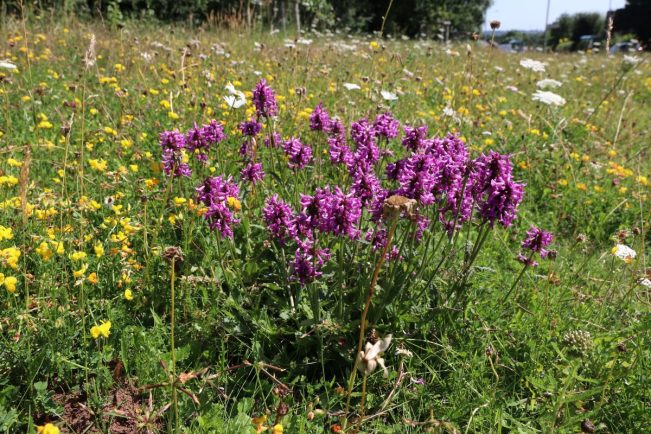MORE roadside verges in Worcester are to become a riot of colour this summer as Worcester City Council rolls out its wildflower verges project.
In 2020 the City Council declared a biodiversity emergency to take action needs to be taken immediately to stop the decline of native species.
Since then it has been looking to boost biodiversity wherever possible by keeping the edges of grass verges trimmed, planting wildflowers and leaving patches to nature itself.
Working alongside Worcester Environmental Group (WEG) the council is planting a mixture of wildflower seeds along grass verges, brightening up the areas with poppies, cornflowers and a host of other plants – creating the perfect habitat to encourage bees, butterflies and other insects and wildlife.
The wildflower verges will create a cheering splash of colour along the city’s boundaries and main arterial routes. Information boards explaining the initiative are being put up in certain areas.
Lloyd Griffiths, the city council’s director of Operations Homes and Communities, said: “Our aim is to keep our roadside verges trimmed around the edges, but also to allow nature to take over in certain areas. It looks pretty, but more importantly it provides a perfect environment for flora and fauna to flourish, helping to boost biodiversity.”
Worcester City Council has also purchased a new mower which collects the grass it cuts, meaning that wildflowers can get the light they need to flourish. In the past, the grass cuttings would have been left onsite.
The council’s biodiversity action programme looks to enhance biodiversity in all its green spaces and parks. It has also committed to planting more trees and to look for possible sites on which to establish wildflower meadows.
Work carried out so far has included increasing the numbers of bat and bird boxes at Astwood and St John’s Cemeteries as well as building log piles to attract reptiles such as slow worms. It has also left some areas of long grass to provide suitable habitat for small mammals, whilst keeping the edges of grass mown and tidy.
The council is working alongside Worcestershire Wildlife Trust, Worcester Environmental Group, Severn Rivers Trust and the RSPB.
Paul Snookes, who chairs Worcester Environmental Group, said: “We need to rethink how we manage our grass verges. If we want to see more bats, bees, butterflies, and many other species, then we need to provide them with the right environment in which to flourish. What the City Council is planning on doing with its wildflower verges is a big step in the right direction and is something we are happy to support.”
To find out more about the City Council’s plans to boost biodiversity, go to www.worcester.gov.uk/climate-emergency/enhancing-biodiversity











